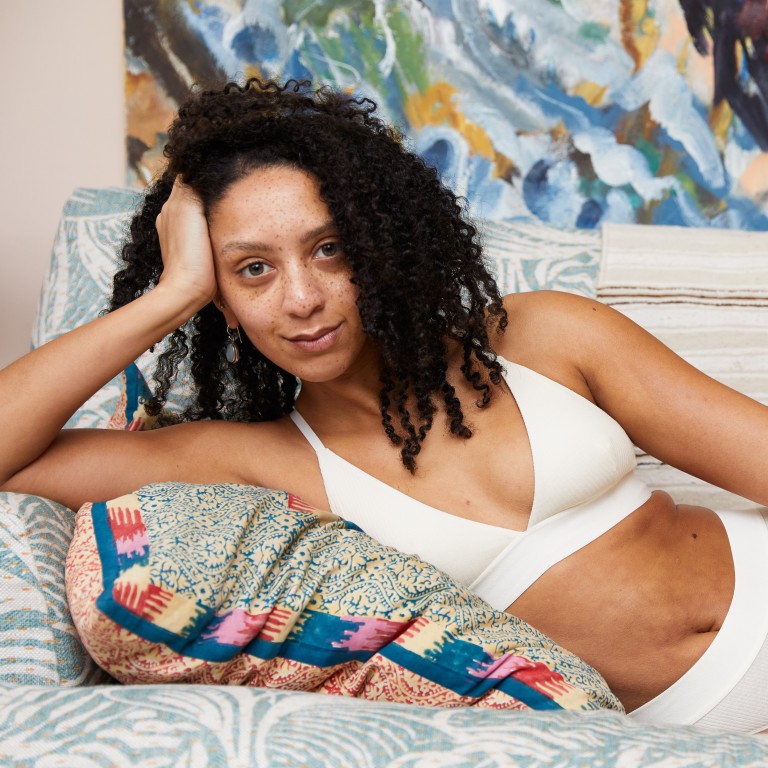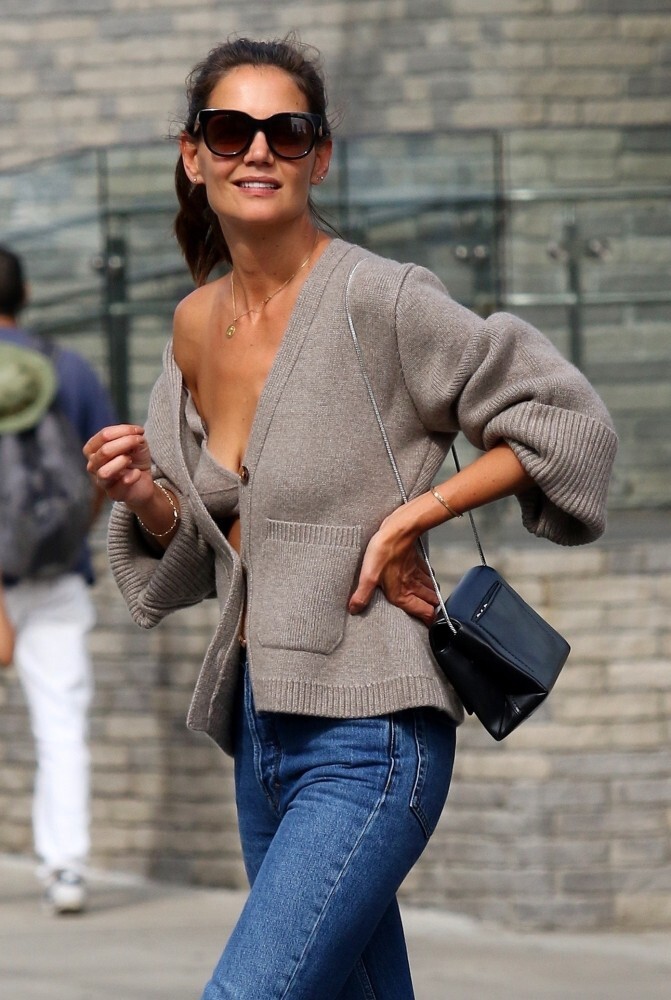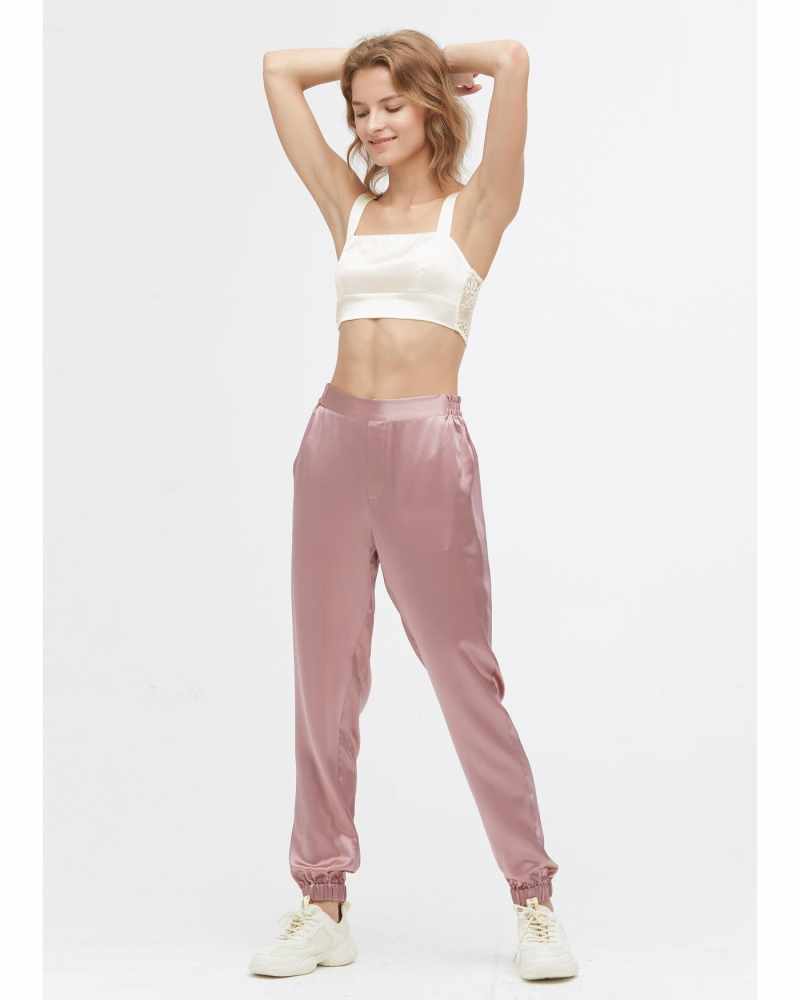
Bras trade sex appeal for comfort – think silk, cashmere, and Zara’s Female Gaze line – and coronavirus lockdowns give the trend an added push
- Lingerie used to be about sex and seduction – and often it was about what men want. Now women shop more for bras, and comfort comes before cleavage
- Fabrics such as silk and cashmere – think Katie Holmes’ viral 2019 campaign for the Khaite brand – are in favour for their softness, along with bralettes
Cast your mind back to the car-crash-causing Eva Herzigova “Hello Boys” Wonderbra campaign from the 1990s. From the tagline to the underwear, and even the model of choice, there could be little doubt about who those posters were aimed at.
Thirty years later and underwear marketing – and the industry itself – has transformed. Wonderbra has fallen out of favour, and after haemorrhaging sales, even Victoria’s Secret has stopped using leggy supermodels in its campaigns in favour of women of all ages, races and body types.
Where the industry was once about sex and seduction, it is now focused on comfort and the way lingerie feels rather than just how it looks.
The pandemic has accelerated trends that were already forming. Research has shown that, since lockdowns began, 60 per cent of women have switched their usual underwear set for a non-wired option, and 46 per cent have ditched their bras altogether for at least one day a week in the name of comfort.
It is less that women are looking for different styles altogether, but more that they are shopping lingerie in a new way – for their own pleasure first and foremost
As a result, over the past year, brands like Ann Summers – which traditionally made ultra-sexy push-up bras and thongs – have suffered losses, while small, independent brands selling pretty but comfort-first styles found their sales went up.
“As women have become more vocal about the issues they – or I should say we – face, it has also become clear that the underwear that is underperforming is the underwear that has been primarily designed for a male audience,” says Tanya Robertson, the CEO of underwear brand Womanhood. “This is the root of all the change we are seeing.”

When Zara launched its much-anticipated underwear line late last year, which was aptly called “Female Gaze”, bralettes were everywhere, colours were muted and underwiring seemed non-existent. The priority was clearly on softness and texture, rather than the performative sexiness of what used to constitute lingerie design. The advertising, featuring women of all sizes and ethnicities, was ethereal and elegant.
As Victoria’s Secret slips from favour, rivals raise the bra
This is probably because, according to fashion research platform Lyst at least, more women than ever are now buying expensive bras and pants for themselves, while the idea of a Valentine’s Day or birthday gift-box from a man containing high-end lingerie feels, well, a little dated.
“There has been a real shift towards women shopping for their own lingerie,” says Robertson. “It is no longer about choosing between practicality or sexy sets, instead women are investing in pieces that reflect their personal style and taste.
“It is less that women are looking for different styles altogether, but more that they are shopping lingerie in a new way – for their own pleasure first and foremost.”

Women with larger breasts still favour underwiring, but padded bras have fallen out of favour for customers of all sizes, with a drop in sales by 45 per cent over the course of the last year. It makes sense: they’re less comfortable and the cleavage is also not as fashionable as it once was, meaning bra styles have had to change.
A Noughties push-up bra was designed to work under a low-cut vest top or a plunging dress, but that protruding silhouette looks all wrong with the slouchy knits we have worn throughout the pandemic.
Texture has also changed. In the past, buying pretty underwear often meant making a pact with the devil: the more adorned it was with florals and bows, the more uncomfortable you were going to be. That thinking is an anathema today, and our new comfort-first mentality can be summed up by one brand: Khaite, whose cashmere bra went viral after Katie Holmes wore one in 2019 with a matching cardigan.


It looked comfortable and stylish and many other labels have mimicked it, from NA-KD on the affordable end to designer labels like Allude and Jacquemus on the more expensive side. Cos has an affordable range of grey ribbed cashmere pants for a matching set, while Alaia has an extravagant jersey knit body that feels like an adult baby-gro but looks a lot better.
If the thought of cashmere underwear feels, well, wrong, you’ll be happy to hear the most popular fabric of all is silk.
From LilySilk to Cos again, brands are turning their backs on oil-based synthetic materials that are bad for the environment and even worse for your skin in favour of breathable styles that are designed to last.

Soft, pretty and comfortable – it seems forgetting about what men want has done women a favour.

